Co-design & Experience Platform for Public Art as part of Data, Art and the City (5-day workshop led by Leyla Saadi)
Adapted from Pokemon-Go, we propose the development of a place-based app that pops the City of Toronto’s public art scene, drives interest and support for local public art and artists, and co-designs future public spaces through voting on virtually presented proposed art.

ENGAGING ART | TECHNOLOGY + PLACE + POP CULTURE
Public art is work in any medium that has been produced by an artist, installed in a public-accessible space.
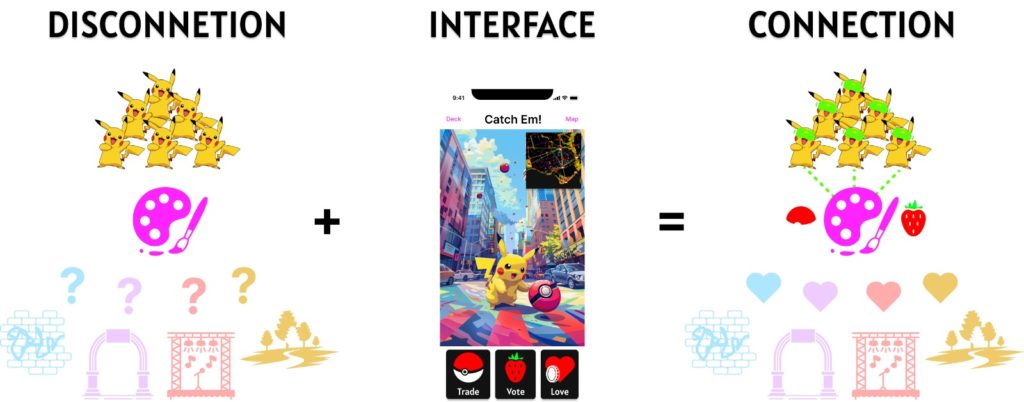
In 2016, an American software development company brought about a new game called ‘Pokemon-Go’. Pokémon Go can be described as a groundbreaking piece of geospatial technology that combines augmented reality (AR) with GPS-enabled mapping technology to create an immersive gaming experience. The game utilizes the player’s real-world location, mapped onto a virtual environment, to allow them to explore their surroundings and discover virtual Pokémon creatures.
To play, users must physically move around their environment to interact with portals, deploy resonators to capture them, and link portals together to create control fields. The game encourages exploration and cooperation between players, as capturing and maintaining control of portals requires teamwork and strategic planning.
The interaction of geospatial technology and the urban fabric through augmented reality serves as a proof of concept for the proposal of utilizing a similar platform for the exhibition of virtual art throughout the city that would benefit multiple stakeholders.
To implement our proposal and strategy. we suggested, pop the ‘Pop’ in ‘Pop Culture’ to drive meaningful learning about place and its curators.
THE PLATFORM
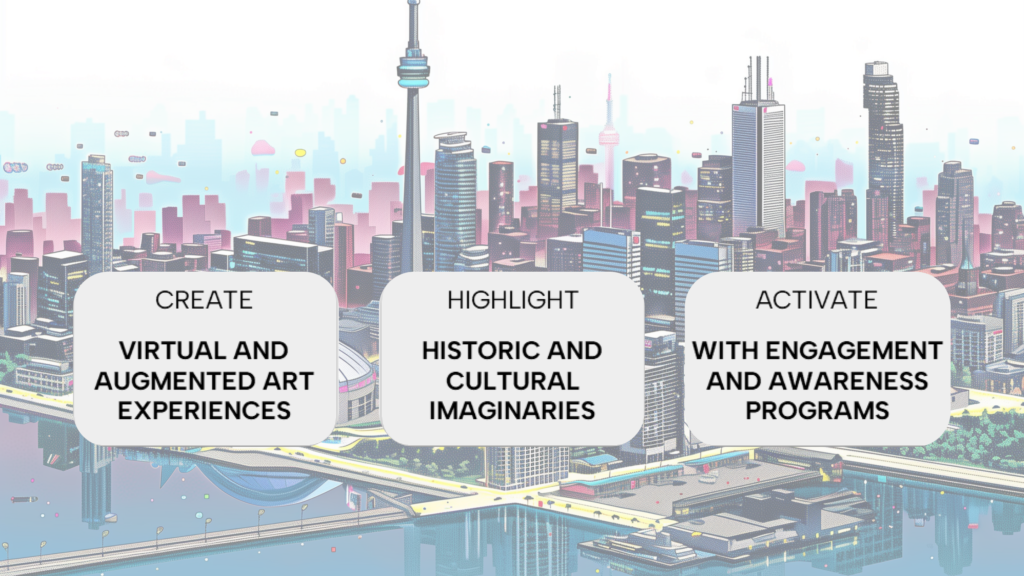
A CONCEPTUAL WALKTHROUGH
To drive connection of young residents with public art, the interface highlights curated physical and virtual networks of artwork across the city. Public art receives attention with neighborhoods activated by nodes of virtual art. Artists received recognition and support in the form of publicly shared virtual tokens and user donation. The platform’s voting interface allows residents to opine on virtual visualization of proposed public art.
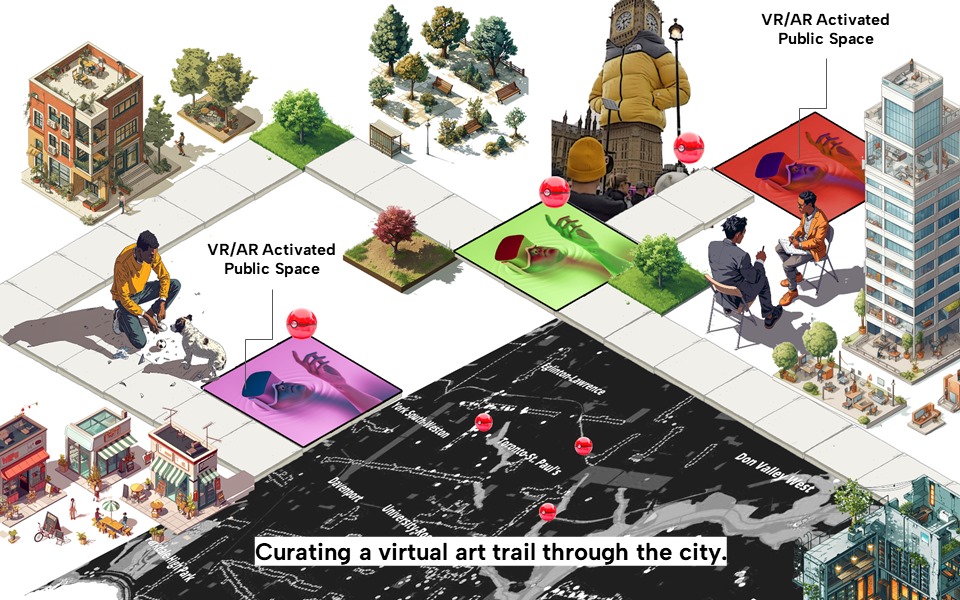
The platform gives the public the ability to vote on pieces of interest and whether or not they should be made in physical form for the space.
METHODOLOGY
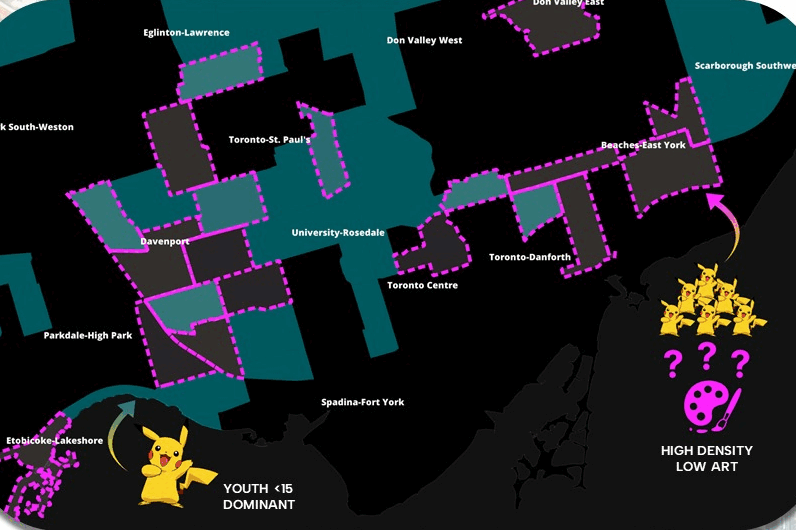
Disconnected by infrastructure, Toronto’s rich network of open data supported the nodal strategy for the future engagement of the youth population.
- Who? Target neighborhoods for engagement were identified as youth-dominant, those with populations under 15 as the highest ranking group, and, of the 40% densest neighborhoods, those with the lowest density of art.
- What? Cultural collectibles were aggregated for users to navigate to art, parks, cultural hotspots, and historic structures.
- Where? Corridors for engagement were located with Toronto’s priorities for investment. Business Improvement Areas, recreation areas, and historic zones form the network of future art spaces.
- How? Users may collect tokenized art, trade tokens at Pokecenters, vote on proposed, virtually generated work, and give back to their local artist heroes. Pokecenters are located in underutilized public spaces in the corridor network, and potential new art is located on existing bleak facades.
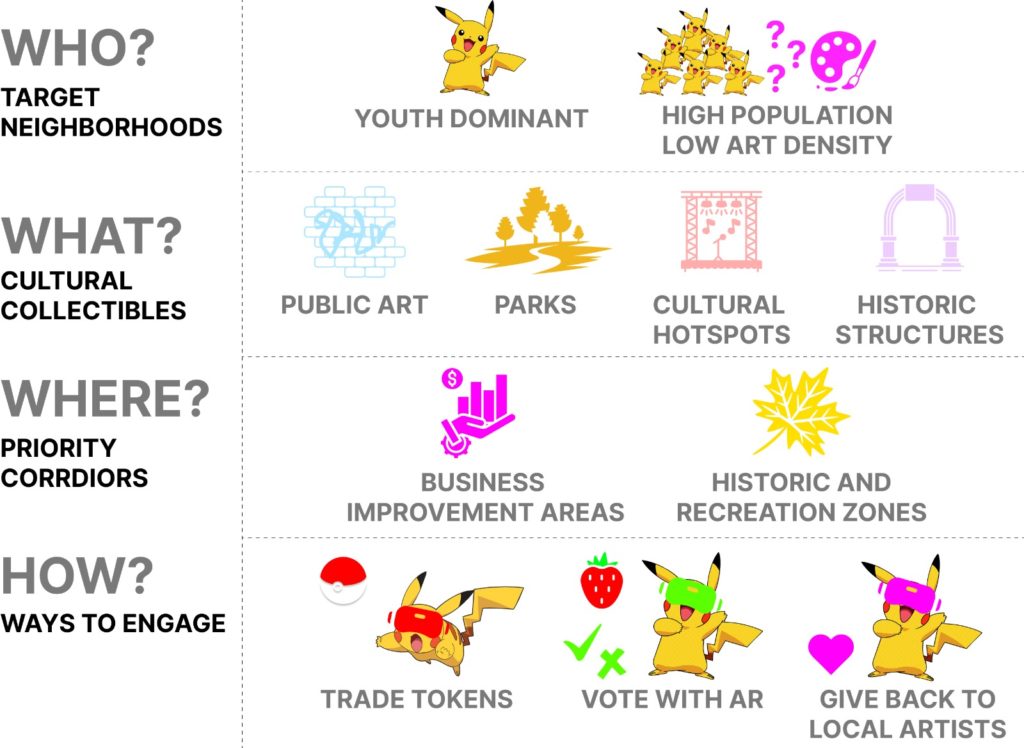
STRATEGIC ALIGNMENT
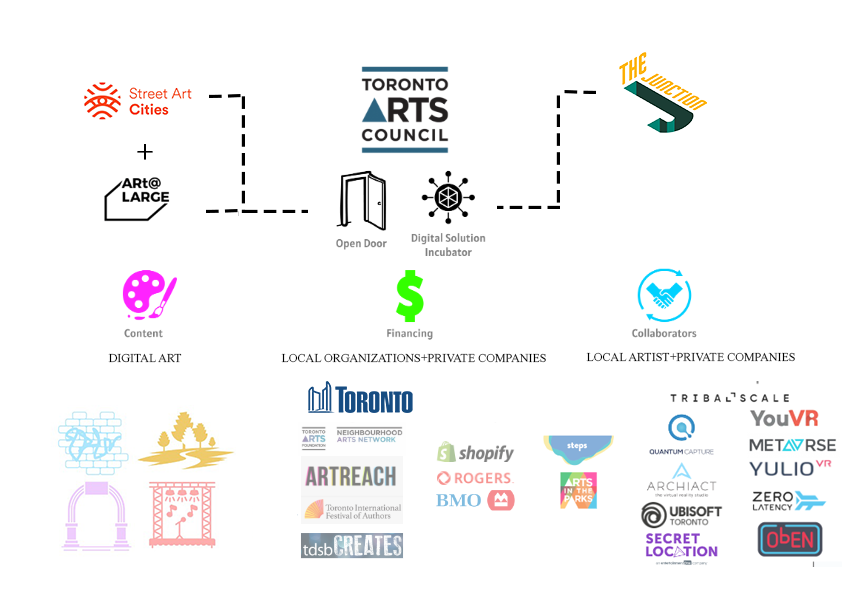
The Open Door granting program, a collaboration between the Toronto Arts Council (TAC) and Toronto Metropolitan University’s Creative School, fosters transformative change in the arts sector. Emphasizing experimentation and collaboration, it prioritizes initiatives benefiting equity priority groups, organizational transitions, and sector-wide challenges. One standout initiative is the Design Solutions Super Course, pairing students with arts organizations to address critical issues. This innovative program integrates technology and design thinking into the arts landscape. In 2024, the focus on AI presents a new opportunity for grant applicants to prototype AI solutions. While optional, this AI focus offers a cutting-edge approach to solving challenges. By combining creativity with technological advancements, TAC and Toronto Metropolitan University are shaping the future of artistic innovation, propelling organizations forward and enriching the arts community.
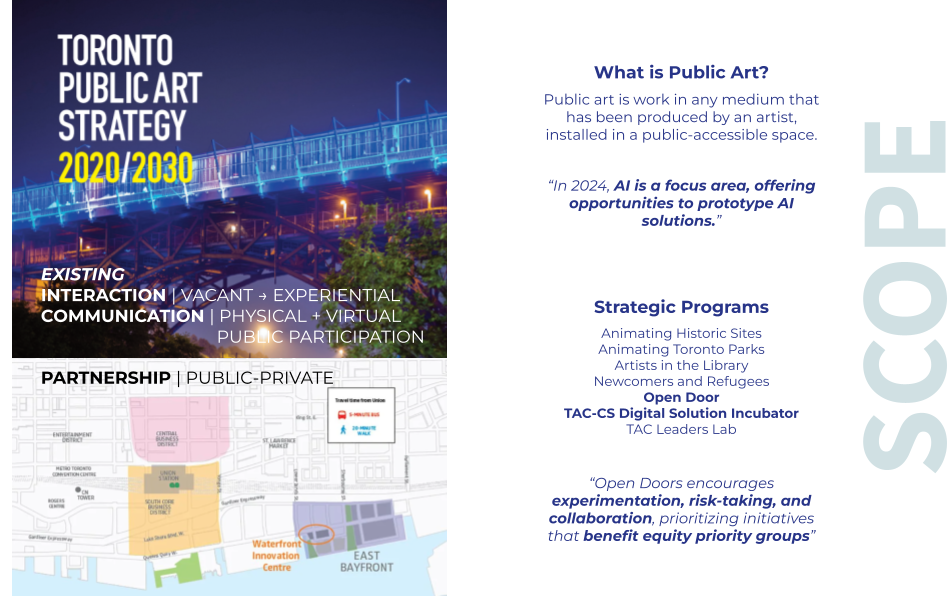
TORONTO PUBLIC ART STRATEGY
Sources
- Toronto Open Data
- City of Toronto Art Council
- Street Art Cities
- Art@Large
- The Noun Project
- Nintendo

